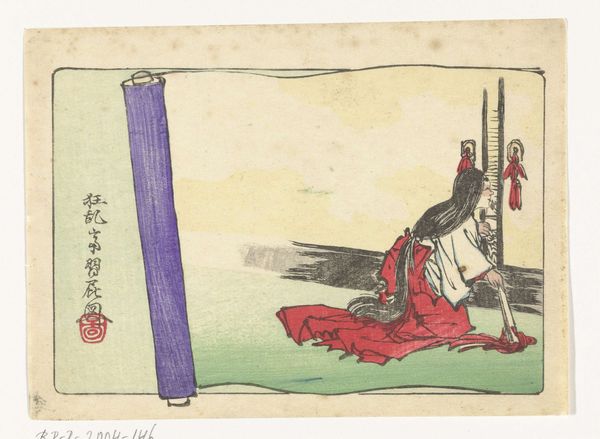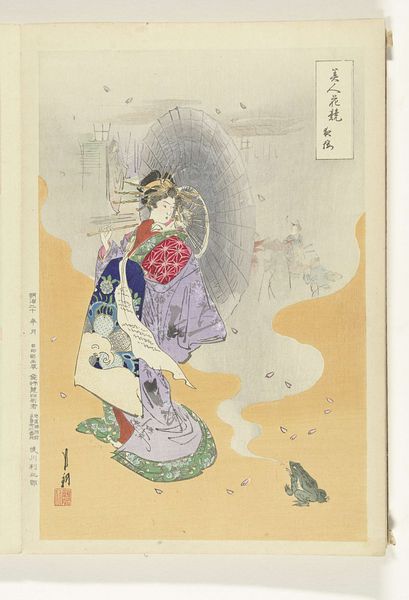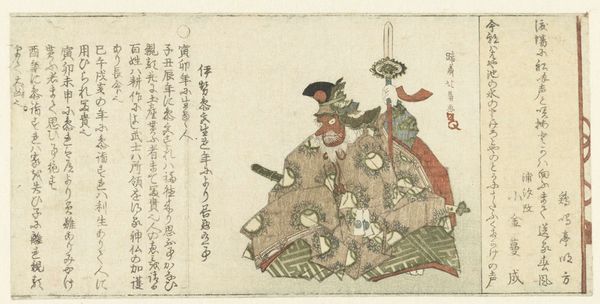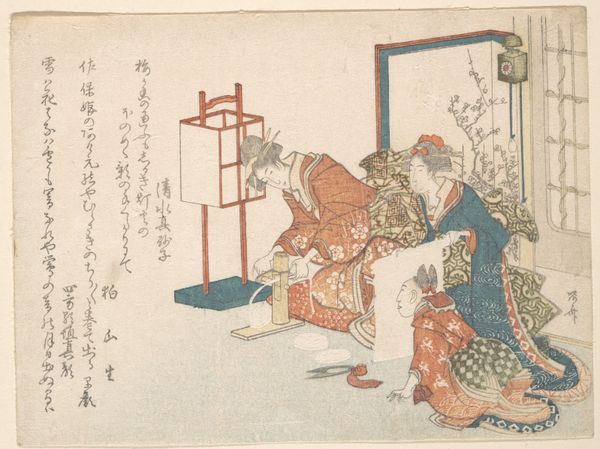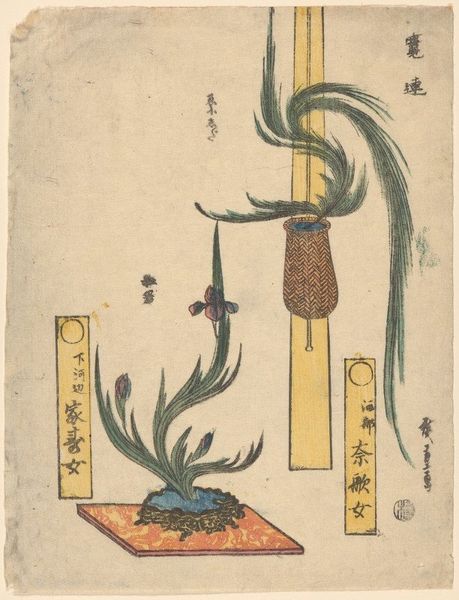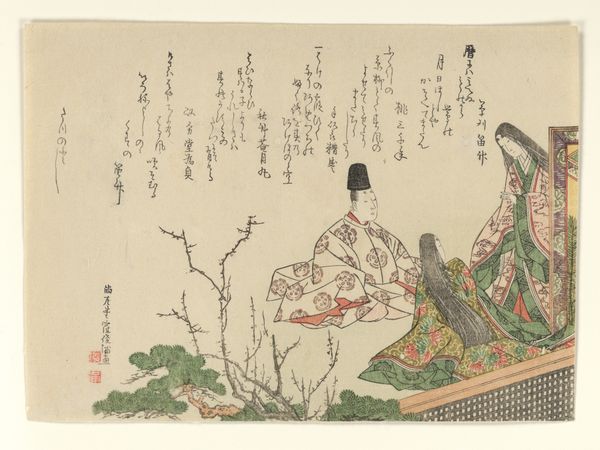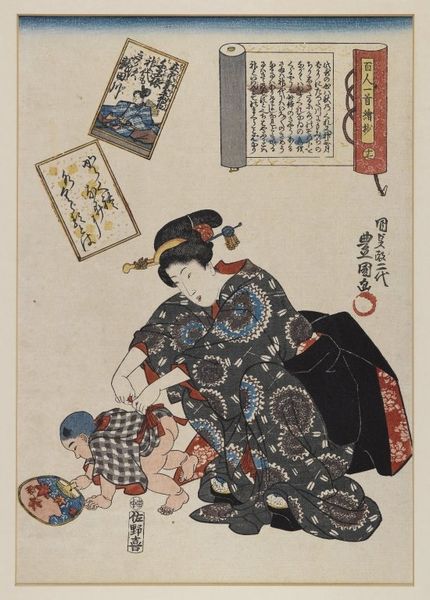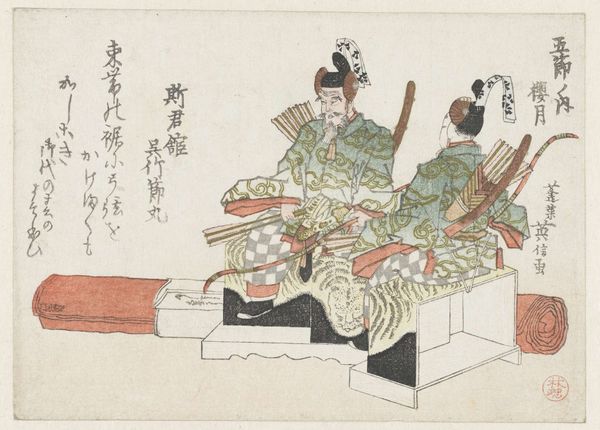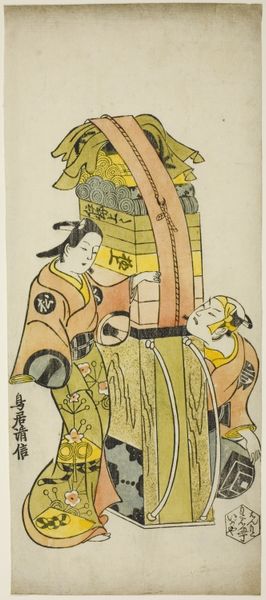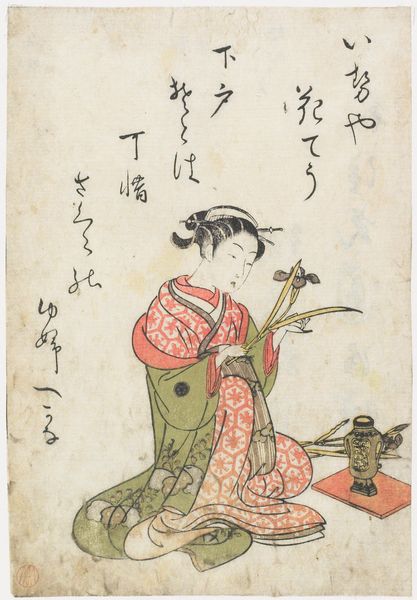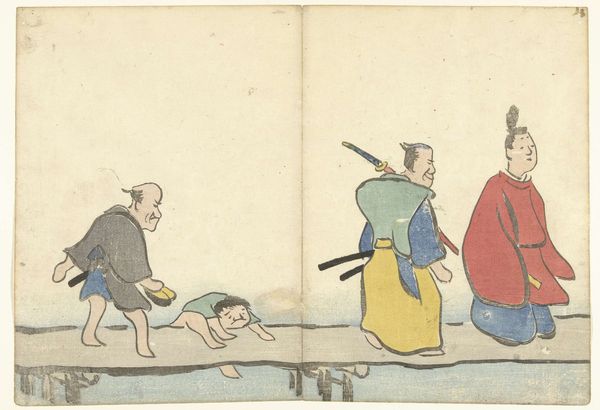
Dimensions: height 131 mm, width 177 mm
Copyright: Rijks Museum: Open Domain
Curator: Kawanabe Kyōsai's "Boogschutter," created sometime between 1870 and 1880, employs the woodblock printmaking technique characteristic of ukiyo-e. Editor: I'm struck immediately by the cool blues of the background against the vivid reds in the foreground figure, who appears both powerful and vulnerable at the same time. The figure’s placement also seems staged, but it's not entirely clear to what end. Curator: Right. It’s an interesting piece, socially speaking. Kyōsai lived during a period of intense Westernization in Japan. He was educated in traditional Japanese art, but he also took a keen interest in Western styles and incorporated elements of both in his work. Editor: So how might that societal tension play out here? This scene looks quite ceremonial; the attention to patterned textiles reminds me of other ukiyo-e focusing on fashion and social standing. Is the Western gaze at all at play? Curator: Definitely, the subject matter suggests a nostalgic look back at pre-Meiji Japan, even as the technique, in some ways, embraces the modern printmaking processes taking root at the time. Ukiyo-e was by this period becoming increasingly commodified. Editor: The print aesthetic is incredibly alluring. In the current sociopolitical context, I keep thinking of the figure’s stance with the arrows as one of quiet defiance. There is almost something unsettling, especially within contemporary contexts. The figure is posed, presented, for who? Curator: Perhaps that is the true heart of this piece, particularly considering the medium in which Kyōsai was working and the rise of ukiyo-e's commodification at the time. "Boogschutter" seems less like a representation of society and more a meta-commentary on the societal stage, with art at the center. Editor: It becomes even more potent when thinking about the power dynamics intrinsic in ukiyo-e printmaking itself, with its separation of labor and reliance on collaboration, it creates space for reflection on the tensions between individual expression and the social construction of art. The role this work occupied in Japan at this moment gives it an added meaning in contemporary global dialogues. Curator: It really exemplifies how social context is inextricable from the artistic statement, both historically and in our current moment. Thank you. Editor: Absolutely. Thank you.
Comments
No comments
Be the first to comment and join the conversation on the ultimate creative platform.
